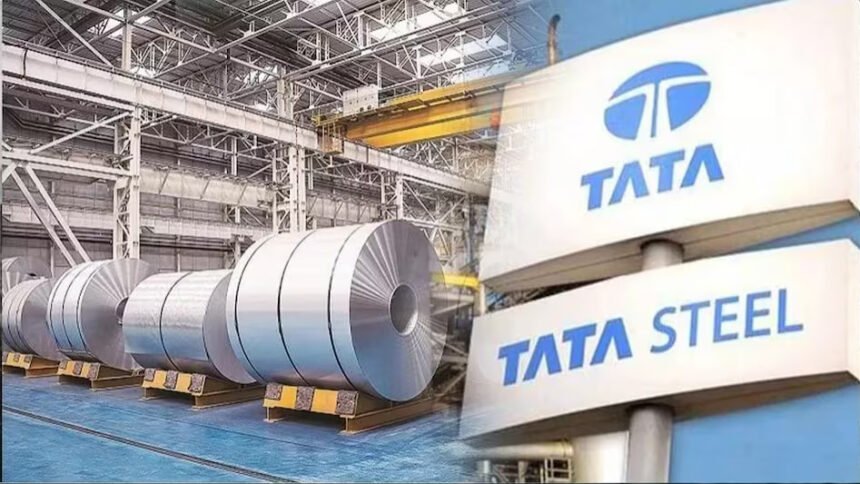When one of India’s steel giants makes a bold financial move, the global markets sit up and take notice. Recently, Tata Steel, a household name not just in India but across the world, announced a fresh infusion of Rs 3,104 crore ($355 million) into its Singapore-based subsidiary, T Steel Holdings Pte. Ltd. (TSHP). This development has left analysts, investors, and industry watchers curious: what’s the bigger picture here, and more importantly, what does this mean for the Tata Steel share price?
A Bold Capital Infusion: Breaking Down the Numbers
In its latest regulatory filing, Tata Steel revealed it has acquired 353.23 crore equity shares of T Steel Holdings at a face value of $0.1005 each. The total transaction value adds up to $355 million (or Rs 3,104.03 crore). Despite the large financial injection, the ownership structure remains unchanged—TSHP continues to be a 100% wholly owned subsidiary of Tata Steel. This signals confidence in its overseas operations and long-term strategy.
Why Singapore? The Significance of T Steel Holdings
You might be wondering—why funnel such a massive sum into a Singapore-based arm? Singapore, being a financial hub with favorable policies for global trade and investments, provides Tata Steel with a strong base for international operations. T Steel Holdings acts as a strategic overseas vehicle that manages global assets and investments. By infusing capital here, Tata Steel ensures liquidity, operational stability, and the flexibility to expand further in foreign markets.
Maintaining Full Ownership: A Strategic Choice
Some companies might have chosen to dilute ownership by bringing in foreign partners or external investors. But Tata Steel’s decision to keep T Steel Holdings a wholly owned subsidiary speaks volumes. It shows the company’s intent to maintain absolute control over its global expansion strategy, profits, and decision-making process. In simpler terms, Tata Steel is saying: “This is our ship, and we’ll be steering it alone.”
Earlier Infusions: A Pattern, Not a One-Off
This isn’t the first time Tata Steel has poured funds into its Singapore subsidiary. Similar infusions were made earlier this year on May 12, June 25, and July 10. Clearly, the company is pursuing a phased funding strategy, which ensures sustained support for overseas operations without creating sudden financial strain. This consistency reflects careful financial planning rather than knee-jerk reactions.
The Market Reaction: How Is the Tata Steel Share Price Responding?
Now let’s get to the part most investors really care about—the Tata Steel share price. In 2025, the stock has already seen an impressive 13.39% surge. That’s a significant climb considering the volatile nature of global commodity and steel markets. Infusions like these often signal strength and confidence, which in turn build trust among shareholders. And while short-term fluctuations are inevitable, long-term investors see these moves as proof of Tata Steel’s robust global ambitions.
Q1FY26 Performance: Profit Doubles Despite Revenue Dip
Financial results often provide the best insights into a company’s health. In Q1FY26, Tata Steel posted a net profit of Rs 2,007 crore—more than double the Rs 918.6 crore it earned in the same quarter last year. On the flip side, revenue dipped by 2.9% to Rs 53,178 crore. But here’s the silver lining: EBITDA rose 11% to Rs 7,427 crore, showing improved operational efficiency. These numbers reassure investors that despite top-line pressure, Tata Steel is managing costs and improving profitability.
What Does This Mean for Retail Investors?
For those closely tracking the Tata Steel share, this is more than just corporate news—it’s a signal. The infusion into T Steel Holdings shows commitment to international growth, while the solid Q1 results highlight resilience in operations. Retail investors should read this as a long-term growth story rather than a short-term stock price gamble. Think of it like planting a tree today that will provide shade for decades.
The Bigger Picture: Tata Steel’s Global Ambition
Steel is one of the most cyclical industries in the world. Prices fluctuate with global demand, raw material costs, and geopolitical tensions. Yet, Tata Steel continues to place big bets on its international arms. By strengthening T Steel Holdings, the company is effectively building a buffer against domestic slowdowns and tapping into overseas opportunities. This isn’t just about capital—it’s about creating a truly global footprint.
Challenges Ahead: Risks on the Horizon
Of course, no corporate strategy is risk-free. Tata Steel will need to navigate rising energy costs, global trade restrictions, and fluctuating steel demand. Additionally, investors will be watching closely to see if the latest infusion actually translates into higher returns. If the money sits idle, questions will be raised. But if it drives expansion, acquisitions, or efficiency improvements, the rewards could be massive.
Analyst Take: Why Experts Are Bullish on Tata Steel
Many market experts remain optimistic about the Tata Steel share price. The doubling of profits, the infusion into global subsidiaries, and the stock’s recent surge all point towards a company on the rise. Analysts often argue that Tata Steel is playing the long game, prioritizing sustainable global growth over short-term market noise. For long-term investors, that’s exactly the kind of strategy that builds wealth.
Conclusion
Tata Steel’s Rs 3,104 crore infusion into its Singapore subsidiary isn’t just a financial headline—it’s a declaration of intent. The company is making bold moves to secure its international presence while keeping full ownership intact. For investors, the most important takeaway is how these strategies will reflect in the Tata Steel share price over the coming years. If history is any guide, patience might just pay off handsomely.
Read More: Love’s Travel Stops & Country Stores: The Ultimate Guide to America’s Highway Hospitality
Final Thought
Steel isn’t just about iron and alloys; it’s about resilience, strength, and shaping the future. Tata Steel, through its strategic global moves, is proving that it isn’t just surviving market cycles—it’s thriving in them. For investors, keeping an eye on the Tata Steel share could very well be like watching a blacksmith at work—each strike shaping something more valuable.









